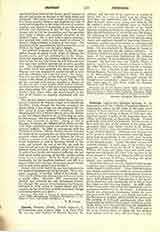

Jedburgh (eighty-two different spellings of the name are given in the “Origines Parochiales Scotiae”), Augustinian abbey, in the town of the same name (capital of Roxburghshire, Scotland), established as a priory by David I, King of Scots, in 1118, and colonized by Canons Regular of St. Augustine from the Abbey of St-Quentin, at Beauvais, France. Fordun gives 1147 as the year of foundation, but this seems to have been the date of the erection of the priory into an abbey, when prior Osbert (styled in the Melrose chronicle “primus abbas de Geddeworth”) was raised to the abbatial dignity. Jedburgh soon became one of the greatest Scottish monasteries, deriving importance from its proximity to the castle (now entirely destroyed), which was the favorite residence of many of the Scottish kings. Lands, churches, houses, and valuable fisheries, on both sides of the border, were bestowed on the abbey by David I, Malcolm IV, William the Lion, and other royal and noble benefactors; and Alexander III chose to be married in the abbey church to Yolande de Dreux in 1285, by which year the monastic buildings, including the great church, were probably complete.
An opulent abbey so near the English border as Jed-burgh was sure to suffer much in the constant wars between England and Scotland. About 1300 the monastery became uninhabitable, owing to repeated attacks made on it, and the community was dispersed. Later on it recovered its prosperity for a time, but in the century and a half preceding the Reformation it was devastated, plundered, and occasionally set on fire, at least four times by the invading English. In 1559 (John Horne being abbot) the abbey was suppressed, and its possessions confiscated by the Crown. A Protestant church was afterwards constructed within the nave and used until 1875, when a new church was built by the Marquess of Lothian, whose family has possessed the lordship of Jedburgh continuously since 1622. Practically the whole of the domestic buildings of Jed-burgh Abbey have disappeared; but the magnificent church is still wonderfully entire. The oldest part is the early Norman choir, of which the two western bays remain; and the nave, 129 feet long, is a very stately and impressive example of Early English work. The decorated north transept (fourteenth century) is the burial-place of the Kers of Fernihurst, now represented by the Marquess of Lothian. The massive central tower is still quite perfect. The total length of the church (inside) is 218 feet.
D. O. HUNTER-BLAIR

